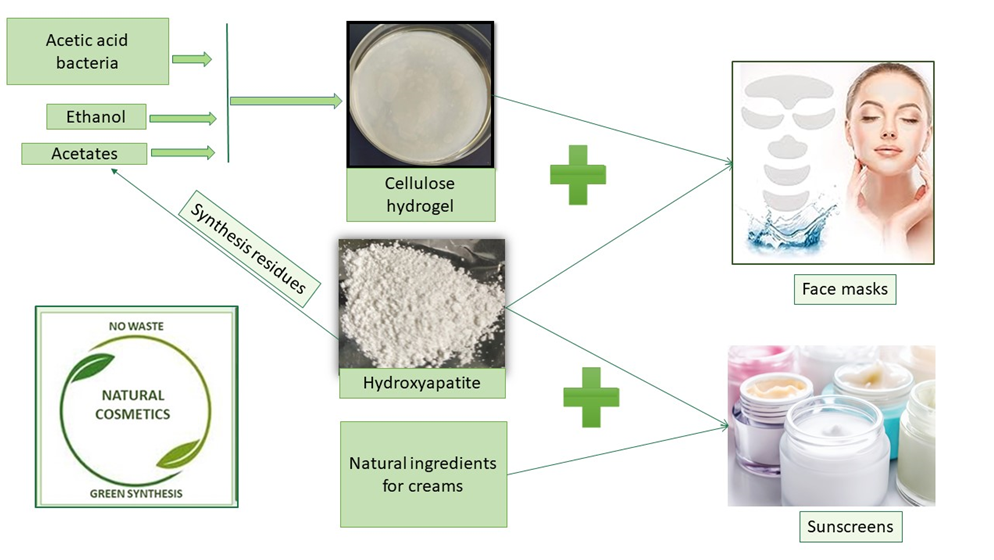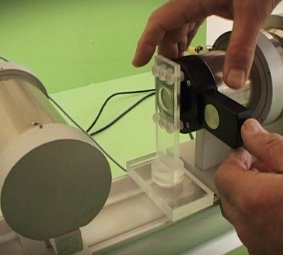
- Description The main idea of this project is based on the synthesis of composite materials based on cellulose hydrogel functionalized with hydroxyapatite for application in cosmetics. The final cosmetic product with environmentally friendly and non-toxic properties would affect the process of skin appeasement due to inflammatory processes. Hydroxyapatite is a natural mineral that is the main component of the mineral part of bones and teeth; in nanoparticle form it has exceptional biocompatible, antimicrobial and filter properties in terms of light absorption from the UVA and UVB spectra. Obtaining cellulose is achieved by simple cultivation of acetic fermentation bacteria, which give a completely pure cellulose hydrogel that would be further functionalized for use in cosmetics, replacing synthetic cosmetic products obtained from oil. Through this process of obtaining cellulose, it has a designed final shape according to the shape of the grown vessel. Processing of the final product using a simple synthesis process obtains the desired design and size of cellulose that can be produced in quantities suitable for commercial application. The cost of production by this method of synthesis would be reduced by up to 30% by using waste as a carbon source, partially replacing conventional substrates for cellulose synthesis, and using ethanol that was created as waste after the hydroxyapatite synthesis process. Due to hydroxyapatite’s functional characteristics as incorporated into cellulose hydrogel would be applied as cosmetic products in the form of face and body masks and protective creams. The products are environmentally friendly since during the synthesis, part of the generated waste is used in the process of obtaining cellulose again. Obtaining hydroxyapatite materials and cellulose hydrogels by green synthesis processes represent new non-toxic materials implemented in cosmetic skin care products with antimicrobial and protective properties that are completely environmentally safe.
- Project Green technologies for obtaining antimicrobial composites for use in cosmetics
- Manager Miljana Mirković
FEATURED

The Research Instruments
the list of research instruments

Projects with Industry
Services, acreditation, motors and vehicles





